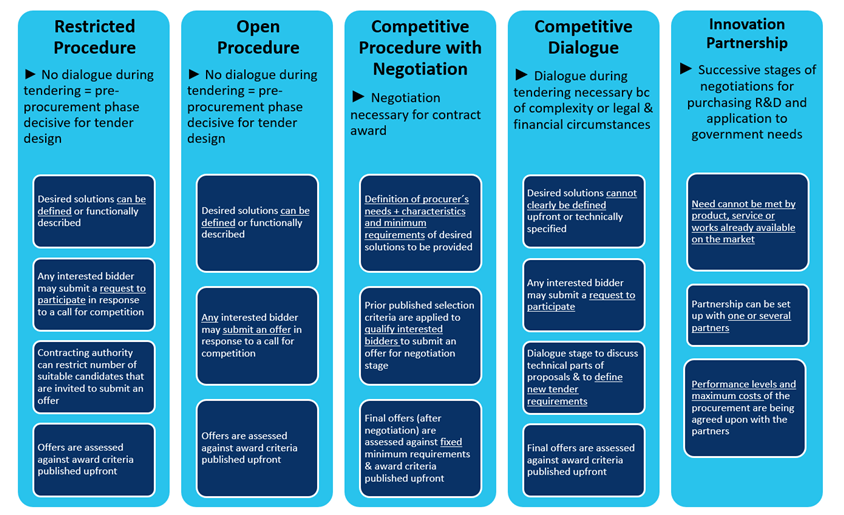How to Implement Strategic, Smart, Sustainable Public Procurement
Public procurement is “not a back-office function anymore, but a crucial pillar for delivering government services, and a strategic one for tackling climate change.”
Public procurement is “not a back-office function anymore, but a crucial pillar for delivering government services, and a strategic one for tackling climate change.”
That was the message from EU Commissioner for Internal Market, Industry, Entrepreneurship and SMEs Elżbieta Bieńkowska and Organisation for Economic Co-operation and Development (OECD) Secretary-General Angel Gurría at a joint high-level event on strategic public procurement in Paris on June 2, 2017.
This high-level support is welcome in a time where governments have to strategically rethink the way they are spending taxpayers’ money. It gives them a mandate to reform public procurement laws, policies and processes towards delivering value for money across the life cycle of the goods, services and assets they purchase.
Public procurement represents, on average, 12 per cent of the GDP in OECD countries, corresponding to 29 per cent of government expenditures (OECD, 2017). This illustrates that public procurement is a powerful tool for driving markets towards more sustainable production patterns, and for creating markets for sustainable goods, services and infrastructure. Despite the changes in recent years to international frameworks governing public procurement, the instrument is not yet being utilized to its full potential.
The EU Public Procurement Directive (2014), the OECD Working Party on Leading Practitioners on Public Procurement (LPP) and the World Bank New Procurement Framework (2015), among others, all emphasize the strategic function of public procurement and shift the meaning of value for money away from lowest price at the point of purchase to overall value for money across the life cycle, encompassing total cost of ownership and quality aspects of the good, service or asset.
For example, the OECD LPP Working Party approved a recommendation in 2015 that refers to public procurement as a tool to deliver secondary policy objectives such as “sustainable green growth, the development of small and medium-sized enterprises, innovation, standards for responsible business conduct or broader industrial policy objectives.”
The World Bank New Procurement Framework’s vision emphasizes that the objective of procurement is "to achieve value for money with integrity to deliver sustainable development":
The focus now is on implementation: how governments can use public procurement to its full potential in order to deliver broader policy objectives. This requires ensuring that public procurement laws, processes and practices are designed to contribute to the implementation of the Sustainable Development Goals.
IISD is working with the Smart Procurement Valuation Tool (for goods and services) and the Sustainable Asset Valuation Facility (for infrastructure) to assist governments with monetizing the environmental, social, economic and financial multiplier benefits and demonstrate that the sustainable option is the only way forward.
The challenges that were identified and discussed during the Paris event focused on the risk-aversion of public procurers, as well as thinking strategically, rather than administratively. More strategic public procurement requires a change in mindset. It demands a professionalization of the procurement workforce. It also calls for more transparency and information on what the market can deliver in terms of solutions for the needs of governments. One important way forward therefore is to provide more certainty to public procurers and policy-makers on the best available technologies to meet society’s needs for mobility, education, healthcare and clean energy, among others. Clear procedures on how to engage with suppliers in a transparent manner are therefore key. For example, the EU Directive on Public Procurement (2014) outlines various possible procurement procedures that can be used (see Figure 1).

Figure 1: Various procurement procedures derived from the EU Directive on Public Procurement (2014). Source: IISD (2017)
In addition to procedural certainty, more data and monitoring tools on the impact of public procurement are needed. This will in turn help make the business case for sustainable public procurement. It will legitimize a potentially higher capital cost at the point of purchase of a good, service or asset because, over the life cycle, the multiplier benefits of buying sustainably far outweigh those initial costs to the procuring agency, and to society at large.
You might also be interested in
Monitoring Progress in Green Public Procurement
This report outlines the importance of monitoring progress in green public procurement (GPP) and highlights various methodologies, challenges, and recommendations.
Gender Equality at the Heart of Recovery: Advocating for Gender-Responsive Procurement in Ukraine
Ukraine is already preparing for reconstruction, which will cost an estimated USD 411 billion and take at least 10 years. The integration of gender considerations into public procurement processes could generate greater inclusivity in a rebuilt Ukraine.
A Sustainable Asset Valuation of Non-Motorized Transport in Coimbatore, India
A Sustainable Asset Valuation (SAVi) of the economic, social, and environmental benefits of a non-motorized transport (NMT) network in Coimbatore, India.
Funding for Canadian Prairies’ water infrastructure urgently needed, but nature offers innovative solutions—new report
The Canadian Prairie provinces’ water infrastructure is aging and depreciating at an alarming rate. However, natural infrastructure can offer a practical and cost-effective solution when scaled up and adopted across all levels of government.
